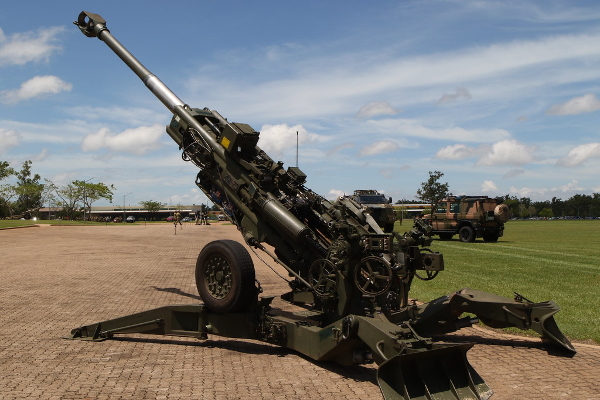NEW DELHI: India has deployed recently acquired US-made weaponry along its border with China, part of a new offensive force to bolster its capabilities as the countries remain deadlocked over disputed territory in the Himalayas.
The buildup in India’s northeast is centered on the Tawang Plateau adjoining Bhutan and Tibet, a piece of land claimed by China but controlled by India. It holds historical political and military significance: In 1959, the Dalai Lama fled to India across nearby mountain passes to escape a Chinese military operation. Three years later, both sides fought a war in the area.
Now US-manufactured Chinook helicopters, ultra-light towed howitzers and rifles as well as domstically-made supersonic cruise missiles and a new-age surveillance system will back Indian troops in areas bordering eastern Tibet. The weapons have all been acquired in the past few years as defence ties between the US and India have strengthened due to rising concerns about Chinese assertiveness.
Indian military personnel escorted a group of reporters through the region last week to highlight the country’s new offensive capabilities. Eastern Army Commander Lieutenant General Manoj Pande said that boots, armor, artillery and air support were being combined to make the force “agile, lean and mean so that we can employ faster.”
“The Mountain Strike Corps is fully operationalized,” he said. “All units including combat and combat support units are fully raised and equipped.”
India has moved to bolster its defences along the border with China after the worst fighting in decades last year led to the deaths of at least 20 Indian army personnel and at least four Chinese soldiers. While the two sides have engaged in talks to disengage, they have yet to agree on pulling back from a key flashpoint in another border area near the disputed area of Kashmir.
India’s deployments show a frustration with the lack of progress on talks with China, said Rajeswari Pillai Rajagopalan, director of the Centre for Security, Strategy and Technology at the Observer Research Foundation in New Delhi. “That we are looking at a second winter engaged at the border explains why India needs to work on building its capabilities and infrastructure at the border and source more equipment from partners like the US,” she said.
Adding to the friction is a new Chinese boundary law that Beijing said was a “unified standard for strengthening border management.” India warned that the new law, passed last week, could affect ongoing border tensions, which China’s Foreign Ministry spokesman Wang Wenbin said was “undue speculation.”
The bulk of India’s fresh forces have gone to the east, where a formation of least 30,000 troops have been deployed over the past year. Prime Minister Narendra Modi’s government has been concerned about a repeat of a bitter 1962 battle in the Himalayas, when the People’s Liberation Army took Tawang as the under-prepared and poorly led Indian Army withdrew. Unused bunkers and war memorials still dot the lone road that connects Tawang to the plains below.
Source: ToI
You may also like
-
IAF Aircraft Set Course For Exercise Eastern Bridge VII At Oman
-
IAF Set To Host The Indian Defence Aviation Exposition-II At Jodhpur
-
Defence Secretary to co-chair 5th India-Philippines Joint Defence Cooperation Committee meeting in Manila
-
Simultaneous Launch Of ‘malpe And Mulki’, Fourth And Fifth Ships Of Asw Swc (Csl) Project
-
Aatmanirbharta in Defence: MoD signs Contract with HAL for 240 AL-31FP Aero Engines for Su-30MKI Aircraft
